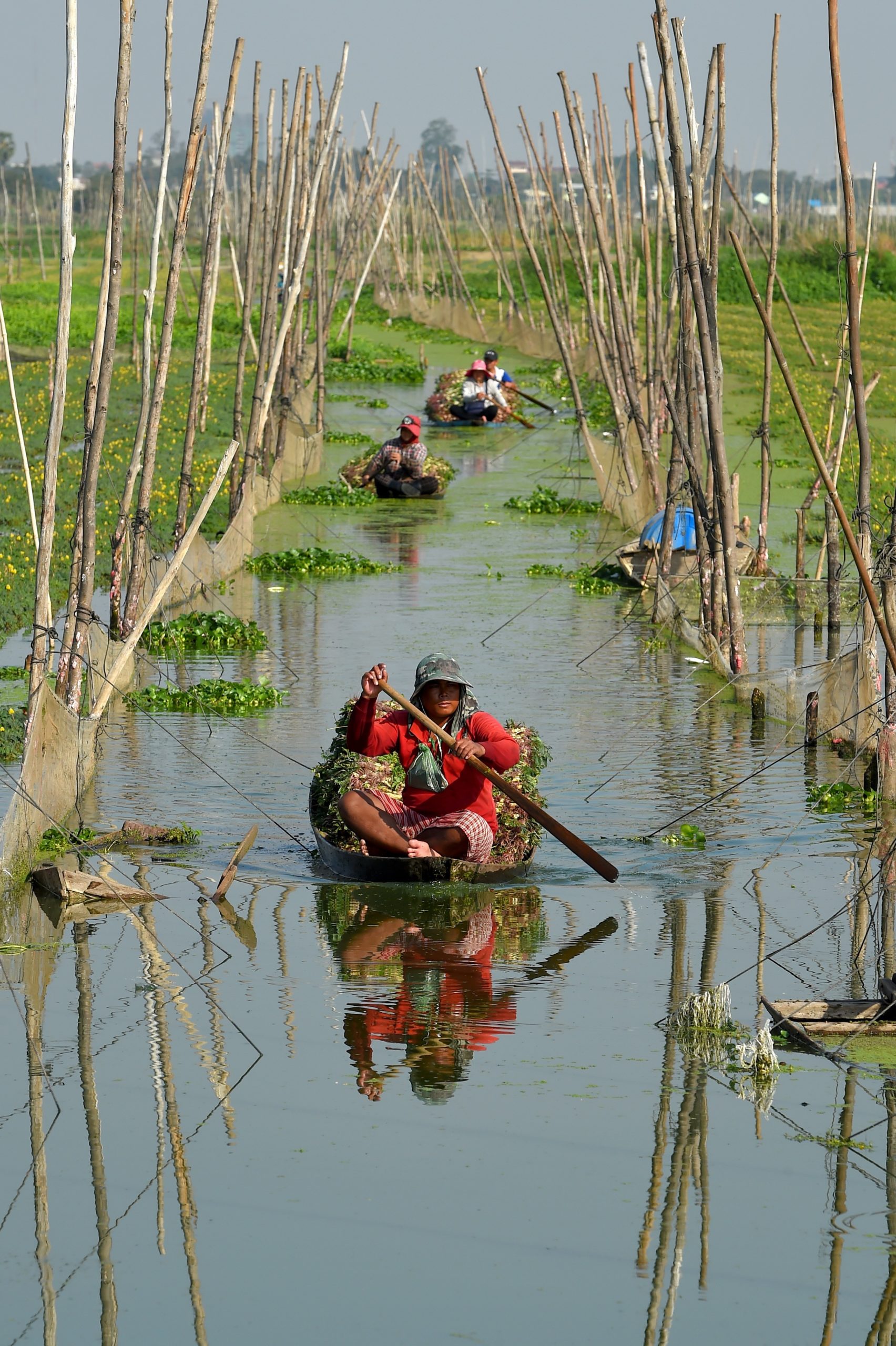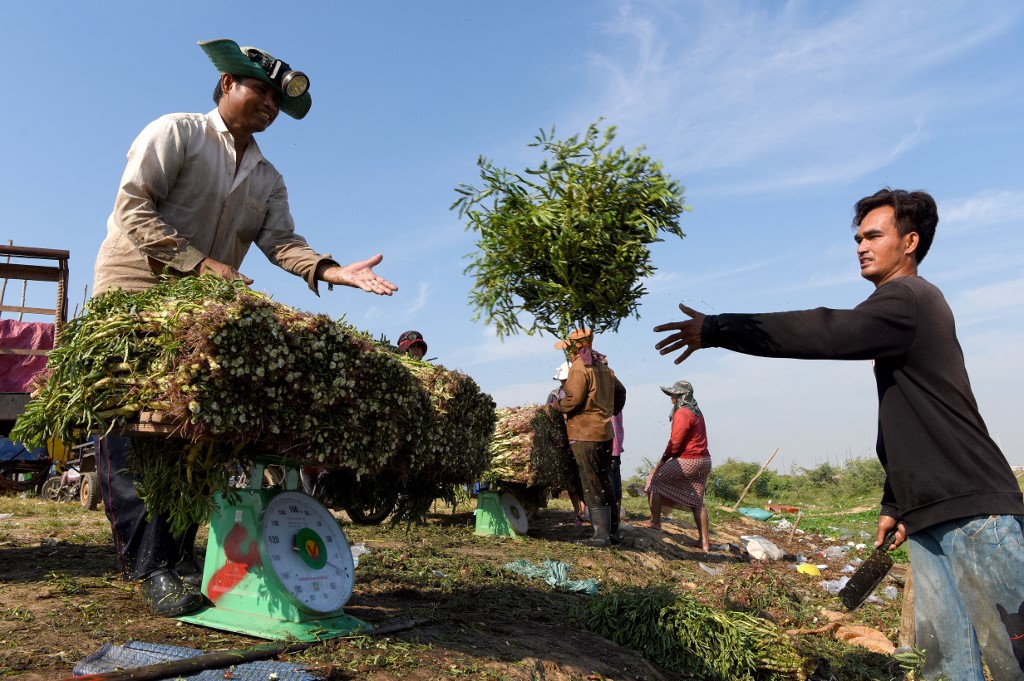This op-ed has been written by Future Forum, an independent Cambodia-based public policy think-tank. The views in this piece do not necessarily reflect those of Southeast Asia Globe.
In this time of uncertainty, one thing about Covid-19 is clear. This pandemic will lead to a sharp and unprecedented decline in Cambodian economic productivity. And the industrial and service sectors will be the hardest hit.
In response to the pandemic and to the economic crisis it will cause in Cambodia, Prime Minister Hun Sen has indicated that he is counting on the agricultural sector to help make up for these shortfalls. In multiple public statements, the Prime Minister has urged farmers to increase their production in order to boost supply for the local market and to stimulate economic growth.
But is this expectation – that the agricultural industry will be able to pick up the economic slack – realistic given the chronic challenges Cambodian farmers face even in non-pandemic years?
The reality on the ground in Cambodia tells a clear story. While the sector remains a crucial component of the Cambodian economy – representing US$5.47 billion or 22% of GDP in 2018 – agriculture’s contribution to the GDP has been on the decline for the past five years. The average annual growth rate for the agricultural sector was 1.07% between 2013 and 2018. For context, compare that with the growth rates of the industrial sector, which grew at a rate of 10.48%, and the service sector, which grew at a rate of 7.5%, over the same period.
Breaking down the industry’s growth rate by sub-sector reveals further stagnation. From 2013 to 2018, the average annual growth rate for crop cultivators was 1.18%, fisheries grew at a rate of 1.73%. The livestock sector achieved only 0.50% increase and forestry and logging saw a decline of -1.60% of forestry and logging, according to the National Institute of Statistics.
Chronic Challenges
Climate change is first among the challenges currently facing Cambodia’s agricultural sector. Scientists expect climate change to alter precipitation patterns, temperatures, and hydrological flows with impacts ranging from increased flooding to droughts, increased salinity expected for coastal areas and new or worsening problems with pests and diseases.
Cambodia is already experiencing many of these phenomena.
For example, in January of this year, the spokesperson for the Ministry of Water Resources and Meteorology, Chan Youttha, warned that due to climate change, “Takeo, Battambang, Svay Rieng, Kampot, Banteay Meanchey, Kampong Thom, Prey Veng and Koh Kong provinces are experiencing water shortages”.
These water shortages have obvious implications for Cambodia’s famers. Many farmers are deterred from growing dry-season rice or attempting other multi-cropping alternatives due to lack of water and lack of irrigation systems for their crops.
And, rather than investing in water access, Cambodia is deteriorating its water resources. Many large-scale irrigation systems cannot operate during the dry season due to water shortages, as well as inadequate operation and maintenance systems.
Of course, the construction of irrigation systems is one of the government’s key strategies for agricultural development, but ongoing efforts remain unable to meet the country’s real demand for water. In the short term, Cambodia should pay more attention to upgrades and rehabilitation of existing irrigation systems and participatory management of irrigation infrastructure. The development of water and irrigation systems should meet local demand, the strategic geographical areas and potential agricultural areas.
Rather than simply reacting to climate change, Cambodia’s agricultural sector has the potential to be part of finding new technical solutions that would aid with climate change mitigation and adaptation. But limited funding for agricultural research and development (R&D) is a major constraint. Based on the National Budget Law 2020, Cambodia spent only US$5.88 million, or 0.11% of agricultural GDP, on R&D.
Beyond climate, another issue prevents Cambodian agriculture from achieving the kind of growth that would meet Prime Minister Hun Sen’s immediate output expectations – the low uptake by farmers of the latest agricultural techniques and technology.
Fertiliser is among the most basic agricultural technologies, but out of all the ASEAN countries, Cambodia has the lowest fertiliser consumption. In 2015, Cambodian farmers used only 25.77 kilograms of fertiliser per hectare. Compare that with fertiliser consumption in Malaysia, Vietnam and Thailand. In 2015, Malaysia used 1,539.30 kilograms per hectare, Vietnam used 438.92 kilograms per hectare and Thailand used 157.14 kilograms per hectare.
And, at the higher end of the technology spectrum, the high cost of up-to-date farming machinery as well as the lack of skilled operators and mechanics familiar with this equipment have a significant impact on the expansion of the country’s crop efficiency and quality. Cambodia’s smallholder farmers simply don’t have the purchasing power and necessary know-how to upgrade their materials.
Compared with its neighbours in the region Cambodia’s farming operations are labour and capital intensive, while production is relatively low
Farmers clearly want to improve their equipment, with demand for credit for agricultural input on the rise in Cambodia. In 2015, the total amount of loans in the agricultural sector amounted to about US$ 2.3 billion, according to the National Bank of Cambodia (NBC). But, many farmers still face difficulties in accessing financing, due to a lack of guarantees, as well as high-interest rates.
Shortcomings in technology, machinery and expertise have obvious consequences. Compared with its neighbours in the region, for example, Cambodia’s farming operations are labour and capital intensive, while production is relatively low.
For example, in 2013 Cambodia used 28 days per person to harvest one hectare of dry season rice, while Thailand used only 9 days per person per hectare and Vietnam’s farmers used 21 days. The difference is even more stark when it comes to wet season rice. Cambodia used 47 days per person to harvest one hectare, while Thailand used 11 days per person per hectare and Vietnam used 21 days.
And consider Cambodia’s harvest efficiency. That same 2013 research found Cambodian labour can harvest 180 kilogrammes of dry season rice per day and 60 kilogrammes of wet season rice per day. Whereas in Thailand, a worker can harvest 530 kilogrammes of dry season rice and 480 kilogrammes of wet season rice per day, and a Vietnames farmer can harvest 390 kilogrammes of dry season rice and 280 kilogrammes of wet season rice per day.
And, in terms of land productivity, Cambodia is falling short. In 2016, Cambodian farmers achieved 3,459.9 kilogrammes of cereal yield per hectare. That’s compared with 4,626.7 kilogrammes per hectare in Laos, and 5,448 kilogrammes per hectare in Vietnam in that same year.
It should be noted that some steps are being taken to assist farmers in these difficult times. The NBC continues to promote banks and microfinance institutions to provide agricultural loans, and the Agricultural and Rural Development Bank recently announced that it would reduce its interest rate to help the agricultural sector during the crisis. With a new addition of US$50 million from the state, these loans will be granted to small businesses and farmers at a 6% interest rate, as opposed to the previous 8% annual rate.

Moving Forward
Without further immediate investment from the government in terms of human and capital resources, in the short term Cambodia’s agricultural sector will simply not be able to meet Prime Minister Hun Sen’s lofty Covid-19-related production goals.
And there’s another critical ingredient the Cambodian agricultural sector is lacking: confidence. Farmers have likely not forgotten that during the wet season harvest of 2019 and early 2020, farmers bringing products to market were met with low prices and a lack of buyers. In Battambang, for example, farmers chose to let their cucumbers ripen in the field because the crops weren’t worth the effort to harvest.
Similarly, Seun Saingti, a farmer from Kampong Speu who shared his perspective with Thmey Thmey, said that while he usually sold his tomatoes at 700 to 1,000 riels per kilogramme, he had recently agreed to sell what he had grown for 300 riels per kilogramme, but even at this low price no buyers could be found.
There are steps the government can take to restore farmer confidence through the address of information asymmetry. In particular, the government could invest in the development of information platforms across media and mobile platforms that provide accurate, and timely information on agricultural markets, potential products for sale, and track demand in specific agricultural communities and regions.
The success of such investment is apparent in India, where the digital agriculture platform has proved very useful for Indian farmers and farming communities by providing up-to-date information on the latest agricultural technologies. Indian farming mobile applications provide users with the latest market rates, weather forecasting, government policies and schemes for farmers, the latest technology and successful farmers videos, and agriculture news. Farmers can directly ask the question and query to the agriculture experts using these applications. These innovative approaches produce real results. India’s precision farming market is growing at an average of 10% and was valued at US$85 million, according to the TechSci Research 2018 report.
Concurrently, monopsony and monopoly practice, collusion, and corruption have been affected by farmers and farm businesses. In the case of cassava, the increase in yield and production is the most impressive, but income does not increase. Farmers depend on buyers from Thailand and Vietnam, who often have a local monopsony position.
The government should use the real muscle behind its stated priorities to fight corruption and other agricultural market standards. Eliminate collusion between powerful people, officials, and business people through a clear system of oversight to monitor and control business activities and the implementation of transparency laws.
On the whole, this moment has the potential to be a turning point for Cambodia’s agricultural sector. If the government recognises these chronic challenges and seeks to address them, then the Covid-19 pandemic, and the focus it brings to Cambodian agriculture might be beneficial for the sector.
Nith Kosal holds a double bachelor’s degree in Economics and Management from the University of Luminère Lyon 2 (France) and the Royal University of Law and Economics (Cambodia). Currently, he is a Young Research Fellow at Future Forum, an independent public policy think tank based in Phnom Penh. His research covers financial subsidy policy and agricultural price policy in Cambodia.


